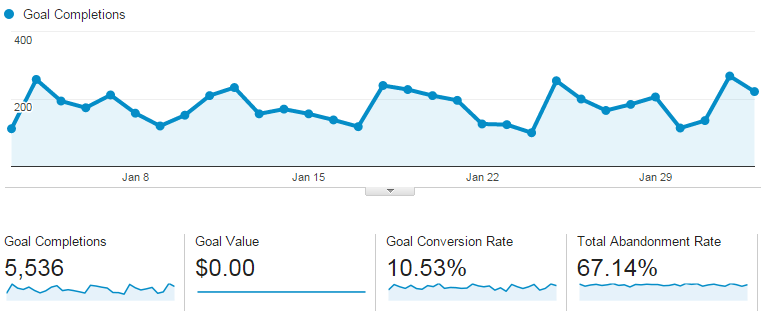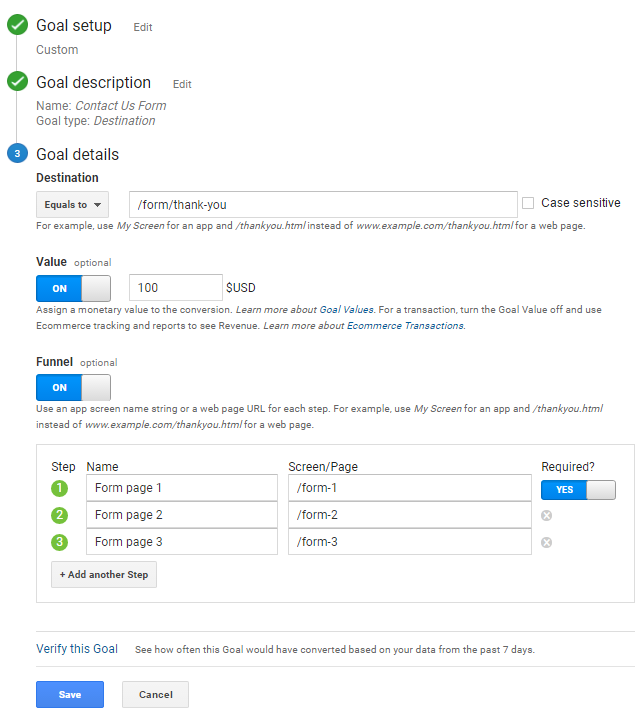What Data Is Google Analytics Goals Unable to Track and Why
Wiki Article
Discover the Limitations of Google Analytics Goals: Revealing the Information Types That Remain Untrackable
As companies progressively rely on data-driven decision-making, recognizing the restrictions of devices like Google Analytics ends up being critical. While Google Analytics Goals offer important understandings into individual communications, there exist data types that elude monitoring, presenting challenges to a thorough understanding of user actions.Insufficient Individual Trip Tracking
Incomplete individual journey tracking within Google Analytics can impede the capacity to precisely analyze customer behavior. When the individual trip is not fully tracked, there are gaps in the information that avoid a thorough understanding of how customers communicate with an internet site. This absence of insight can lead to missed out on opportunities for optimization and enhancements to the user experience.One common problem with insufficient individual trip tracking is the failure to see the full path that users take in the past finishing an objective or leaving the website. Without this information, it is challenging to determine where individuals might be encountering obstacles or friction points that avoid them from converting. Furthermore, incomplete tracking can cover the effect of particular marketing efforts or website adjustments on customer habits.
To resolve this limitation, it is vital to establish correct monitoring mechanisms within Google Analytics to record the entire customer journey. This might involve establishing occasion monitoring, goal funnels, or making use of tools like Google Tag Supervisor to ensure that no crucial interactions go unrecorded. By acquiring an extensive view of the customer trip, web site proprietors can make more enlightened choices to enhance customer engagement and drive conversions.
Attribution Difficulties
Navigating via acknowledgment obstacles in Google Analytics needs a complete understanding of how different touchpoints add to the general conversion process. Attribution obstacles occur from the complexity of contemporary customer trips, where users engage with numerous networks prior to transforming. Google Analytics provides various acknowledgment versions like very first touch, last touch, and linear, each providing a various perspective on how credit is appointed to touchpoints along the conversion course. These designs might not constantly accurately reflect the true effect of each touchpoint on the conversion.One usual acknowledgment difficulty is the problem in attributing conversions to the correct source, specifically in situations where customers communicate with several channels prior to converting. In addition, cross-device tracking presents an additional acknowledgment difficulty, as customers commonly change in between tools throughout their journey, making it testing to track their interactions flawlessly.
Offline Conversions
Provided the challenges associated with associating conversions properly in online channels, the measurement of offline conversions provides a significant opportunity for marketing professionals seeking an extra detailed understanding of their consumers' trip. Offline conversions describe activities that customers take in the real world, such as making acquisitions in brick-and-mortar stores or over the phone, attending occasions, or involving with published products - what data is google analytics goals unable to track. These conversions are important for companies that operate both online and offline, as they provide beneficial understandings right into the efficiency of advertising and marketing projects across different touchpointsTracking offline conversions typically postured a substantial challenge for marketers, as it was testing to connect these actions back to particular on the internet interactions precisely. Nonetheless, with improvements in modern technology, such as the assimilation of CRM systems, special identifiers, and promo code codes, organizations can currently bridge the space between online and offline information to get a more holistic view of client habits. By properly gauging offline conversions, marketing professionals can optimize their techniques, designate resources more effectively, and inevitably boost the general client experience.
Cross-Device Tracking
Cross-device monitoring plays a vital duty in recognizing the interconnected nature of consumers' digital interactions across several tools. In today's omnichannel globe, where individuals effortlessly switch between smartphones, desktop computers, and tablet computers, tracking their behavior throughout these devices is crucial for online marketers to acquire a comprehensive sight of their client trip.
Furthermore, privacy issues and regulations such as GDPR and CCPA have even more complex cross-device monitoring. With users requiring even more control over their information and increased constraints on tracking modern technologies, marketers must locate cutting-edge and privacy-compliant methods to attach individual interactions across gadgets.
Dynamic Web Content Engagement
Understanding individual interaction with dynamic material is crucial in enhancing digital advertising and marketing techniques for enhanced additional resources target market interaction. Dynamic material describes website elements that change based on customer behavior, choices, or various other factors, providing a tailored experience. However, tracking individual interactions with vibrant material postures difficulties for conventional analytics tools like Google Analytics.While Google Analytics can track fundamental communications like clicks and web page views, it might battle to catch even more nuanced engagements within dynamic web content. what data is google analytics goals unable to track. Metrics such as time invested in specific dynamic elements, float actions, or interactions within pop-ups are commonly not quickly quantifiable utilizing conventional monitoring approaches. This limitation prevents online marketers' capability to totally grasp just how individuals are involving with vibrant content and customize their techniques appropriately

Final Thought
Finally, Google Analytics objectives have constraints in tracking incomplete customer journeys, associating conversions precisely, capturing offline conversions, tracking cross-device communications, and gauging dynamic material engagement. These restraints highlight the importance of discovering added monitoring techniques and devices to get a more thorough understanding of individual habits and conversions beyond what Google Analytics can provide.While Google Analytics Goals offer important insights right into individual communications, there exist data types that thwart monitoring, presenting difficulties to an extensive understanding of customer habits.Incomplete user trip monitoring within Google Analytics can prevent the capability to properly visit homepage examine customer actions. When the customer journey is not totally tracked, there are gaps in the information that avoid a thorough understanding of how customers communicate with a site.One typical problem with insufficient customer journey tracking is the failure to see the complete path that users take in the past finishing an objective or leaving the site. By getting an extensive view of the user trip, website proprietors can make even more educated choices to enhance customer interaction and drive conversions.
Report this wiki page